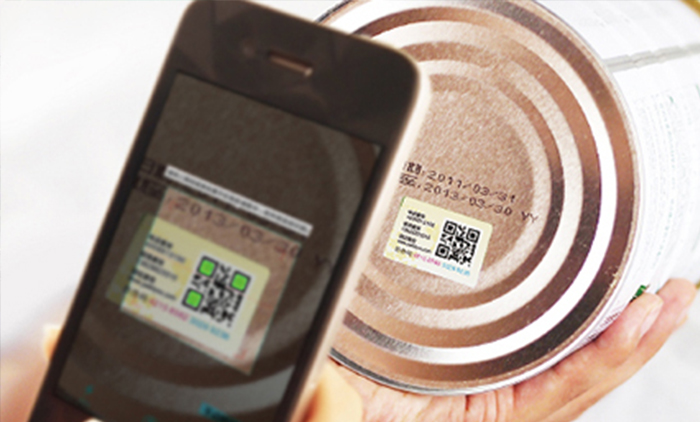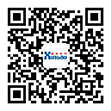What is the anti-counterfeiting and anti smuggling system?
Based on the one thing one code technology, advanced means such as the Internet of Things, big data, and cloud computing are utilized to enable users to transition from unfamiliar to familiar with the traceability system.
By applying one item one code to each product and establishing an independent and unique "ID card" for each product, the product lifecycle can be traced, thus achieving anti-counterfeiting and anti smuggling management of the product.
Anti counterfeiting system: collects and uploads information from raw materials (supplier, production date, batch number, shelf life) to the production and processing process (every link from raw materials to finished products), records key information, generates QR codes (dynamic encryption technology), and achieves anti-counterfeiting at the software system level.
Anti smuggling system: By entering information into the dealer management system and distribution system, precise control over product circulation, logistics, and commercial channels is achieved, realizing anti-counterfeiting and anti smuggling of products.

What is the function of anti-counterfeiting and anti smuggling management system?
To understand the role of anti-counterfeiting and anti smuggling systems, it is necessary to understand them from a theoretical perspective and analyze them from an application level in order to better form a systematic knowledge structure.
There are many common anti-counterfeiting methods in the market, such as data anti-counterfeiting, process anti-counterfeiting, material anti-counterfeiting, and other types of anti-counterfeiting. Below, we will analyze the potential benefits in detail to give everyone a deeper understanding.
1、 Anti counterfeiting management.
Data anti-counterfeiting: There are many common methods, such as variable barcode anti-counterfeiting; Variable QR code anti-counterfeiting; The internal and external codes correspond to anti-counterfeiting measures. These technologies can be generated and implemented through SAAS traceability cloud platform, and the coding is completed by transmitting data to the coding device.
Barcode anti-counterfeiting: A barcode is a label composed of a set of regularly arranged bars, spaces, and corresponding characters, which can convey certain information and represent an item.
Variable QR code anti-counterfeiting: QR codes can store strings with larger amounts of information, making scanning easier. Through encryption, they can be applied to every aspect of product lifecycle traceability.
Craftsmanship anti-counterfeiting: Through various techniques, achieve effects that are difficult to replicate, such as pattern anti-counterfeiting; Multi-color serial printing; Laser holography and other technologies achieve anti-counterfeiting purposes through physical means.
Material anti-counterfeiting: By selecting materials with special characteristics, it is difficult to replicate, such as security thread technology; Application of fiber silk materials; Application of anti-counterfeiting film materials.
Other anti-counterfeiting measures: Utilize some less popular technology applications to make the product more unique and distinctive, such as using fluorescent ink, voice anti-counterfeiting, RFID chip anti-counterfeiting, and other technologies.
Anti counterfeiting warning: After purchasing a product, consumers can scan the code through WeChat or a browser. After scanning the code, the number of times the code has been scanned will be displayed, indicating whether there is a risk of counterfeit or shoddy products. Authentic products will be identified, and counterfeit products will be warned and notified.
2、 Anti intrusion management.
What is anti smuggling management?
Cross selling refers to the phenomenon where distributors transfer goods to non sales areas for sale without the manufacturer's permission, meaning that goods sent by the manufacturer to location A are sold in location B.
By tracing the potential of SAAS cloud platform's dealer management module, it is possible to manage dealers nationwide, accurately control channels, ensure consumer loyalty, and enhance brand image.
Anti leakage warning: Once the goods are scanned in a different location, after setting a certain threshold, warning prompts will be given according to the settings to assist manufacturers in data and visual management.
Distributor management: Distributors' and distributors' smuggling behavior will directly affect the interests of manufacturers, and will also affect manufacturers' accurate grasp of data on product sales in various regions. Let's take a look at how hidden profits can achieve anti smuggling management.
Production and warehousing: The management of smuggled goods is based on boxes or cartons as the smallest shipping unit. In order to facilitate shipping, it is necessary to collect and associate boxes, cartons, and pallets.
Sales outbound: Download the sales order, which contains dealer information such as shipping address, recipient, product list, etc.
Scan code for outbound: Scan the code through PDA to associate the operator, shipping location, shipping time, product information with the order.
Logistics tracking: Record logistics information to ensure that there are no abnormalities during transportation. Distributors scan the code to receive the goods and confirm that they have arrived at the designated location.
Receipt confirmation: After the dealer scans the code to receive the goods, they will provide feedback on the status of the product information, change it from shipped to received, and confirm the sales area of the product.
Cross border inspection: Cross border scanning will record the scanning time, location, and scanner ID. The system will automatically determine whether the goods are in the designated area based on the order information bound at the time of shipment. If not, an alarm will be triggered.


 Try Now
Try Now





